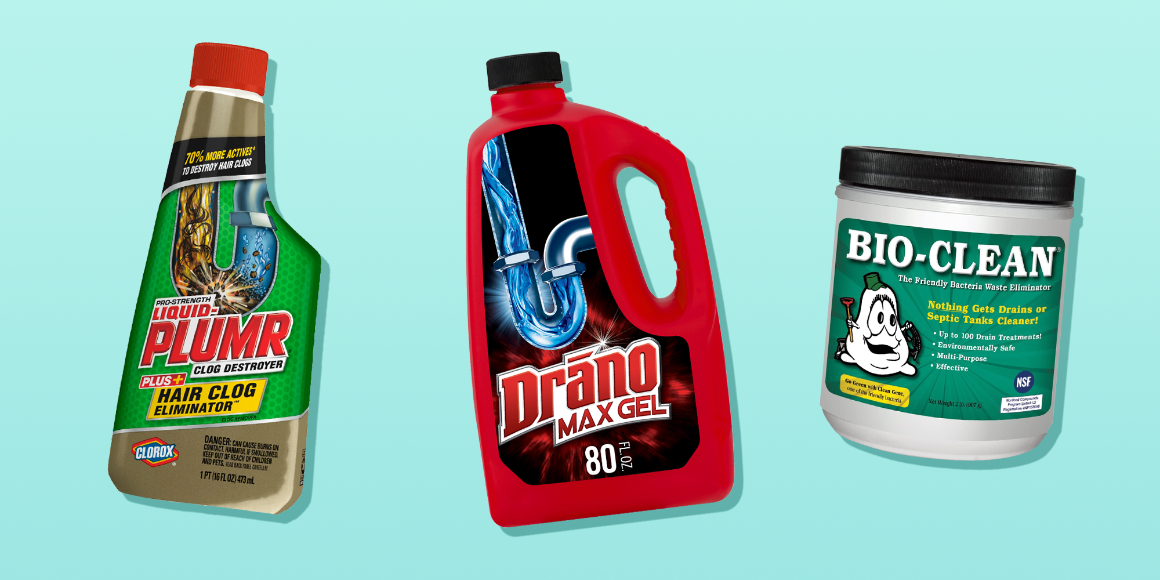PlumbServe is availabile 24 hours, Day and Night to Clear Clogged Drains and Pipes. We use Drain Snake Machines as well as Drain Jet Machines that use water pressure. Give us a call NOW to get that water flowing again. We service all of Granville County, The Triangle, Raleigh, Durham, Cary, Chapel Hill as well as Vance and Person Counties.
Common Causes & and Possible Fixes For Clogged Drains
Clogged drains are just part of the joy of indoor plumbing. The good news is that you can troubleshoot the issues and prevent them from happening again, including chronic problems. But to get there, we'll need to get into what causes drain clogs in the first place.
- Most bathroom drain clogs result when dirt, skin flakes, and especially hair binds to soap scum on the walls of drain pipes. Over time, this gunk accumulates and reduces water flow.
Troubleshooting: Remove and clean the drain stopper. Next, try using the humble drain plunger, keeping in mind to block the overflow drain in the tub or sink. If that doesn't work, remove the drain elbow joint and clean it out. Clean drain stoppers routinely to prevent clogs and use a hair strainer drain-cover to trap hair before it goes down the drain.
- Clogged toilets are a nasty business. These mainly happen when people try flushing down items that do not dissolve or break apart in water such as:
- feminine hygiene products
- cotton-tipped swabs
- dental floss
- pre-moistened diaper wipes
Troubleshooting: The plunger is the first line of defense. The most effective plungers shoot jets of water to clear the drain pipe. Many have anti-microbial coatings. Next, use an inexpensive hand-powered drain auger. While not a pleasant experience, a hand auger can reach between 2 to 5 feet down the toilet's drain pipe to break-up or retrieve things (such as Junior's action figure) that are blocking the pipe. The best preventative for keeping your toilet free from clogs is to only put in waste and paper that readily dissolve in water. Regular cleaning will also keep water flowing smoothly.
- Kitchen sink drains clog when cooking grease or oil cake onto drain pipe walls. Add detergent soap scum and un-dissolved food particles (such as rice which expands in water), and you've got a stubborn, gunky clog.
Troubleshooting: Tackle kitchen sink drains like you tackle bathroom sinks. Start by running very hot water down the drain to soften the clog, followed by a dollop of dish detergent and then more hot water. Wait a few minutes, and then use a plunger and repeat the hot water. If you still have no luck, you might want to move onto a chemical drain opener. Again, use caution. In the future, dispose of large amounts of kitchen grease and oil by letting them solidify. Scrape the mess into a plastic bag, seal it, and throw it out with the garbage. Small amounts of oil (less than one cup) should be thoroughly diluted with hot water and dish detergent before being poured into the sink.
If you are constantly plagued with clogged or slow drains, have a plumber inspect the plumbing to determine if the drain line was properly designed and installed. Both drain pipe venting and slope effect how well drains work.
- Venting allows air to enter the pipe as water drains away. Think of what happens when you put a straw into a glass of water. If you cover the open end of the straw with your finger, you prevent air from entering the straw and that creates a vacuum. When you lift straw out of the glass, the water won't drain from the straw until you lift your finger. When enough air is entering the vent, then water and waste will drain properly. Your toilet, for example, will swirl and empty quickly when it's flushed. However, if the venting doesn't let enough air in, then you might hear the sink gurgle when you flush the toilet. Also, remember that venting allows sewer gases to escape and prevents them from building to dangerous levels inside your home.
Meanwhile, drain pipe slope determines how well water carries waste to the sewer line. If there's too much slope, water can run too fast and leave waste material behind. Over time, the buildup forms a blockage. If the pipe slope doesn't have enough slope, then the water and waste pool in the pipe. Some waste will settle out and, again, form a blockage. Troubleshooting: First, check that nothing is blocking the vent pipe opening on your roof. Sometimes birds or other animals build nests on top of un-enclosed vent pipes for warmth. Also, check under sinks for gulp valves. Gulp valves are typically mounted at the end of a drain line and look like a plastic cap from a can of spray paint. The valve prevents sewer gas from escaping the drain line but lets air into the vent pipe when there's enough suction. If you fill the sink with water and then drain it out all at once, you should hear air getting sucked into the gulp valve. If not, the valve might need to be replaced. Also, if there is a constant odor of raw sewage in your home, contact a professional plumbing service immediately. For slope problem, any blockages will first need to be removed with a plumbers' snake and the pipe flushed out with water. A new pipe set at the proper slope to carry sewage away more effectively should then be installed by a professional plumber.
DO NOT USE CHEMICALS TO CLEAN YOUR DRAIN

Because of its corrosive nature, Drano or other drain cleaning solutions can cause toilet bowls to crack, PVC pipes to melt or break and the glue that holds pipes together can be eaten away. If any of these things happen, you're going to be left with an inoperable plumbing system and costly repairs